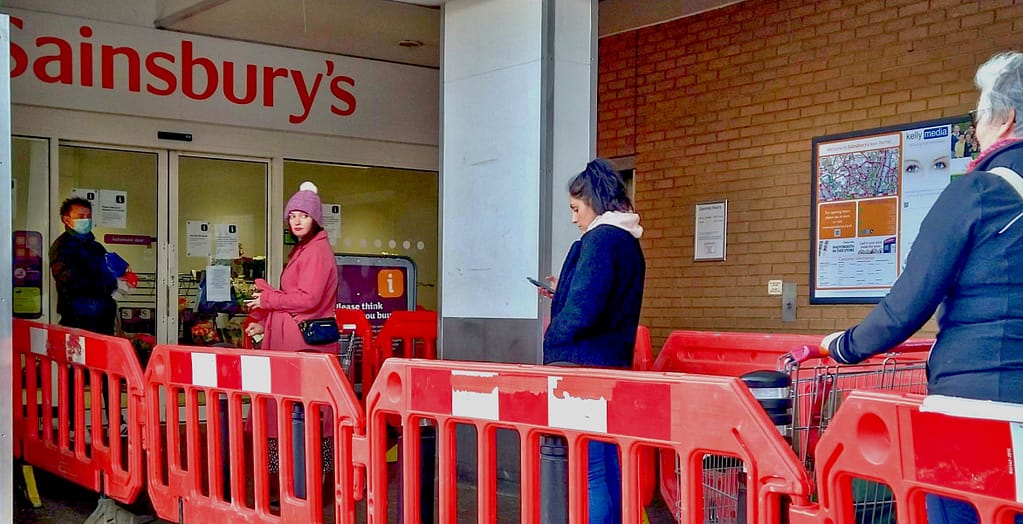Phase 1: Rapid Response and Initial Reset
Step 2: Safety, Spatial Awareness and Human Work 1
A Real Test for “Safety First” as our Systems are Stretched to the Limit
As the restrictions are cautiously being lifted there will be an ever-increasing tension between the need to increase economic activity on the one hand the control the risk of transmission on the other. There is much talk of capacity and much of this is “spatial” capacity which is based strongly on assumptions of individual human behaviour. This series of Step 2 blog posts will cover these critically important topics.
Safety First, Risk and Stratification
There are countless organisations and corporations across the globe that aim for or have the #1 goal of “Safety First”. It is without doubt that the current pandemic will test whether that sentiment and value is maintained and show whether safety really is #1. In countries that have aggressively supressed the outbreak the governments have made the return-to-work environment a less complex place as the possibility of transmission is massively reduced. The levels of risk are lower and circumstances simpler. In many other countries with the virus in circulation, however, it is a different picture with a complex mix of risk, distancing, financial pressures, communication, guidance and behaviour. Not a clear and obvious situation at all. For leaders and managers it means that it isn’t an easy task to set a course and direction at all. Whilst it is clear that zero transmission is a goal (we will cover this more in the next blog) the situation for many is that they will have to back to work in some way. Therefore, understanding the risk associated with this is important. For many in England the perception of risk isn’t always based on clear fact and data which can increase nervousness and reluctance to return to “normal”.

Risk and Individual Perception
As lockdown restrictions are gradually eased the UK government are advising organisations and businesses to become “COVID Secure”. The definition of what this actually means is hard to pin down as it can mean many different things in different settings and for different people. No matter what the government message is individuals will be making their own judgements and appraisals about various activities and what level of risk they are, individually, willing to take for them and their family. However, we are not always the best, rational judges of risk as our fears, emotions and circumstances greatly influence us. For instance, not the same as a pandemic I know, but I am not the best free water or sea swimmer (sorry Juliette) as I have an irrational fear of sharks and large fish lurking in the dark water. This influenced perception of risk is a problem as it means we may not make the best, rational decisions.
A recent paper published in the Journal of Risk Research entitled “Risk perceptions of COVID-19 around the world” https://core.ac.uk/reader/322485786 noted “across all of our national surveys, we find that risk perception of COVID-19 is uniformly high.” The paper goes on to say that both social amplification and direct experience significantly increases the perceived risk “Several specific predictors proved important, including the role of prosocial versus individualistic values and to a lesser extent our measure of social amplification (hearing about the virus from friends and family). Most notably, experience with the virus stands out across all countries, such that people who have had personal and direct experience perceive significantly higher risk.” It is important, therefore, that the messaging and clarity regarding risk is thoroughly thought about and sensitively delivered. That clarity needs include a rational estimate of the current risk.
Everything has a Risk
In a recent article regarding the lethal risk and risks of COVID-19 in the UK https://medium.com/wintoncentre/what-are-the-risks-of-covid-and-what-is-meant-by-the-risks-of-covid-c828695aea69 Sir David Spiegelhalter says “As COVID-19 changes from being seen as a societal threat to a problem in risk management, it is essential that we get a handle on the magnitudes of the risk we face, and try to work out ways to communicate these appropriately.” The article presents data regarding “the risk of dying from COVID-19, among people who do not currently have it (known as the Population Fatality Rate PFR).” Using Office of National Statistics (ONS) data the main summary table below shows that age is directly linked to risk.

If you were using this table as a guide you could safely say that younger people below the age of 24 would be less at risk if they returned to work. Equally, if you are above the age of 44 you are more at risk if you were to return at the same time. The article says that there is a difference between women and men, “men had roughly double the risk compared with women of the same age”. If we compare the risk to other activities we can make a judgement. In 2017 the National Safety Council in the US estimated that your odds of dying from a lightening strike were 1 in 161,856. They also estimate that you have a 1 in 3461 chance of dying from choking on food. I should be reassured about lethal shark attacks as the Australian government recently estimated the odds at 1 in 7 to 8 million. The COVID-19 article’s data analysis does point to the importance of age, sex and other factors that could guide our planning and design of new work, workplaces and environments. At the heart of this are individuals.

Stratification of Risk to Guide our Return to the Workplace
During an interview with the UK’s Channel 4 news Sir David Spiegelhalter said that “Coronavirus risk to young people “like a weeks’ worth of driving”” and that the risk for the young is “staggeringly low”. This is in stark contrast to the risk to old people which is 1,000’s of times greater as we can see in the table above. The use of the data and an understanding of context/circumstances should, therefore, guide the planning and safe setup of the “new” workplace and is incredibly important. It definitely shouldn’t be a one-size-fits-all. Older people are at greater risk than the young and men are at greater risk than women with the shielding at the greatest risk. In a “safety first” world there is a case, then, for stratification of the workforce when thinking about the return to work.
This is backed up by an editorial in BMJ on the 28th May 2020 https://www.bmj.com/content/369/bmj.m2063. It starts by saying that “protecting those at most risk of dying from covid-19 while relaxing the strictures on others provides a way forward in the SARS-CoV-2 epidemic, given the virus is unlikely to disappear in the foreseeable future”. It goes on to suggest that “instead, the aim should be to communicate realistic levels of risk as they apply to different groups, not to reassure or frighten but to allow informed personal decisions in a setting of necessary uncertainty.” When discussing the plans for returning to work it is clear that the aim is to try to minimise the transmission rate is first and foremost the correct thing to do. However, it is also important that for those that do have to go back to work there is clarity about the relative risks and understandable reasoning behind any staged plan to return.


